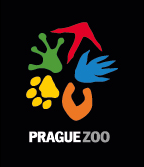This year eight Przewalski’s horses will fly to Kazakhstan by army planes

The first transports of Przewalski’s horses from Europe to Kazakhstan will take place this June in the framework of the project entitled Return of the Wild Horses 2024.
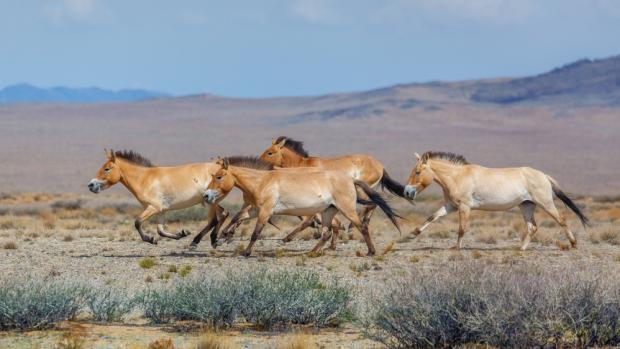 Przewalski’s horses run through the landscape of their ancestors in the Great Gobi B Strictly Protected Area in Mongolia. Such a sight will soon be a reality on the Altyn Dala steppe in central Kazakhstan. Photo Miroslav Bobek, Prague Zoo
Przewalski’s horses run through the landscape of their ancestors in the Great Gobi B Strictly Protected Area in Mongolia. Such a sight will soon be a reality on the Altyn Dala steppe in central Kazakhstan. Photo Miroslav Bobek, Prague Zoo
On 3 June, two CASA army aircraft, carrying a total of eight horses on board, will take off from airports in Prague and Berlin. After stopping over in Istanbul and Baku, they will land in Arkalyk, central Kazakhstan, on 4 June. The horses will then be transported over land to the Alibi acclimatisation centre in Altyn Dala. Following on from Mongolia, the last wild horse will thus return to the steppes of another country in the heart of Asia. Representatives of Prague Zoo, the Czech Army, the European Association of Zoos and Aquariums (EAZA) and the Frankfurt Zoological Society (FZS) announced this at a press conference in Prague recently.
“After taking Przewalski’s horses to Mongolia, we are starting to write a new chapter on the return of the last wild horse to the lands of its origins,” said Miroslav Bobek, Prague Zoo’s director. “In Kazakhstan, we have chosen the Altyn Dala area, (translated as the Golden Steppe), as the most suitable area for reintroducing the Przewalski’s. Our goal is to transport at least 40 horses there over the next few years.”
The Przewalski’s horse became extinct in the wild in the late 1960s. Prague Zoo played a crucial role in preserving it in captivity, and since 1959 it has kept the world studbook on it. Later on, the zoo was also involved in returning the Przewalski’s horse to Mongolia; most notably with nine transports to the west of the country between 2011 and 2019. Now, besides returning Przewalski’s to Kazakhstan, Prague Zoo is also preparing a project to reintroduce them to eastern Mongolia.
In his speech EAZA President Endre Papp stated, “The Przewalski’s Horse is an iconic animal representing a success story in animal conservation: extinct in the wild, preserved thanks to the zoo, returned to its original habitat. From the perspective of the European Association of Zoos and Aquariums, it is precisely this that is one of the key aspects of progressive zoos - their involvement in EAZA’s Ex-situ Programmes (EEP) and their skill in linking this with in-situ conservation efforts, i.e. wildlife conservation.”
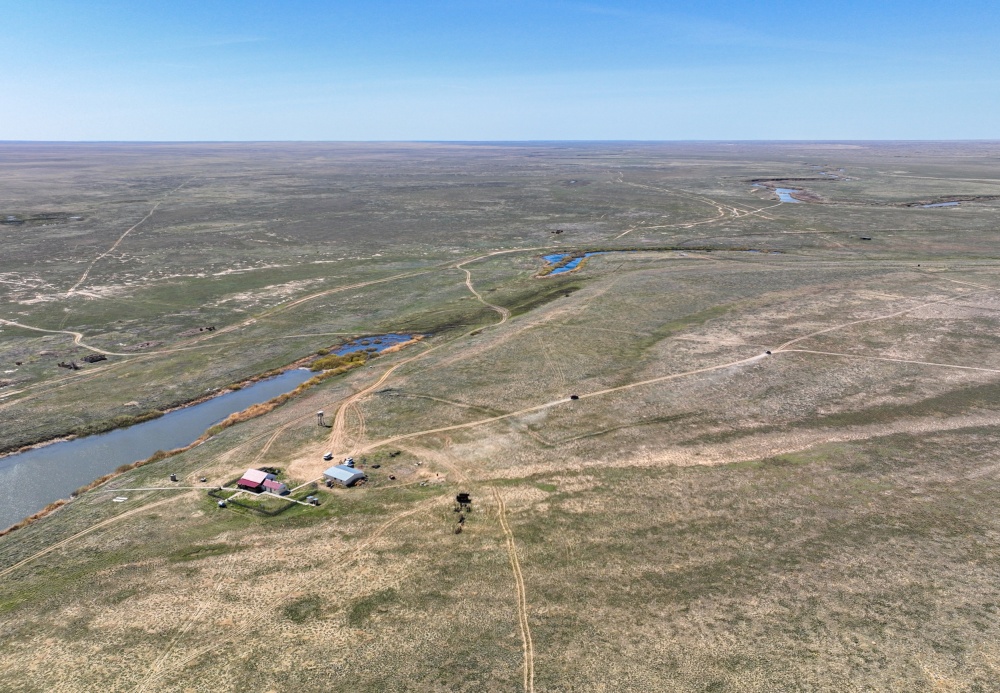
An aerial view of the Altyn Dala area and the Alibi Reintroduction and Acclimatisation centre. After being transported here the Przewalski’s horses will become accustomed to local conditions prior to being released into the wild. Photo Tomáš Hulík, Prague Zoo
The aim of the “Kazakhstan” project is to transport at least 40 Przewalski’s horses to the Altyn Dala region over five years. These will go on to form the basis of the local population. Prague Zoo will arrange their transport in close cooperation with the Czech Armed Forces and other partners.
Commenting on the transport, Brigadier General Jaroslav Falta, Commander of the 24th Transport Aviation Base at the Prague-Kbely Airport said, “We are counting on using two CASA C-295M aircraft from the Czech Armed Forces to transport three stallions and five mares from Prague and Berlin. Four horses will be transported by one plane from the Prague-Kbely military airport, the other four animals will be from Tierpark Berlin and will be transported from Berlin. Both aircraft will take off on Monday 3 June 2024 shortly after noon.”
The planes will fly to Arkalyk Airport with stopovers in Istanbul and Baku. The landing at Arkalyk is scheduled for the morning of Tuesday, June 4, with the horses being released into the acclimatisation pen at Alibi the same evening following their overland transport.
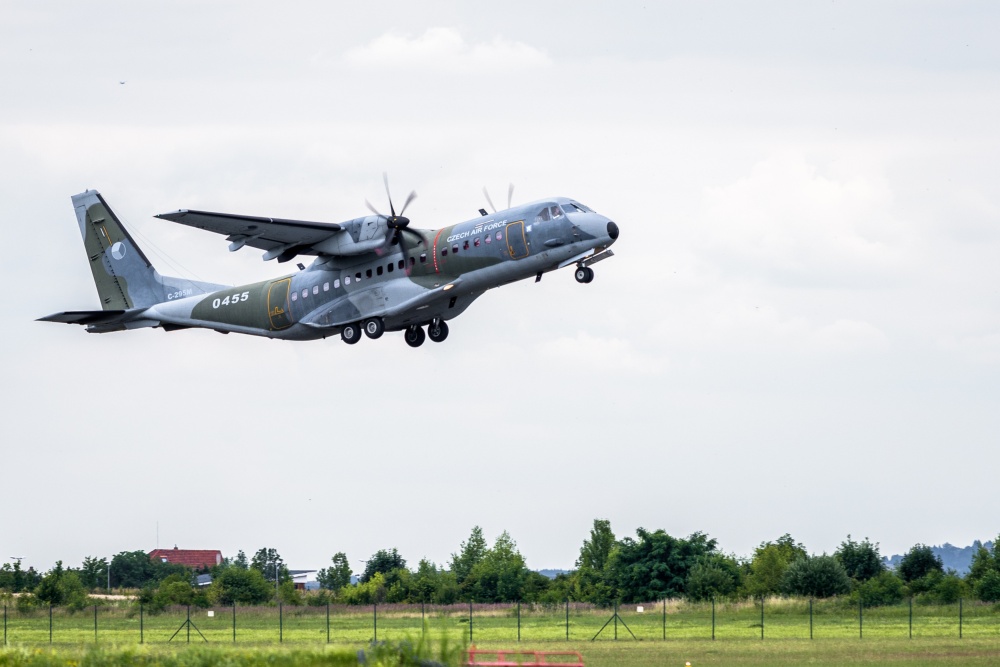
The Czech Armed Forces’ CASA C-295M aircraft have been used not just for transporting the Przewalski’s horses to Mongolia, but also, most recently, for transporting the western lowland gorilla Duni from Spain to Prague. This year two aircraft will set off on the same day to take a total of eight Przewalski’s horses to Kazakhstan. Photo Petr Hamerník, Prague Zoo
Speaking in Prague, Steffen Zuther, a researcher at the Frankfurt Zoological Society, said, “We built the basic infrastructure at the site several years ago, when it was mainly used for the reintroduction of the Turkmenian kulan a wild ass from Asia. The Alibi Centre will now serve another ungulate species and, once the necessary modifications have been made, it will become the Przewalski’s horses’ gateway to the Golden Steppe,” Together with its partners, the Frankfurt Zoological Society founded the Altyn Dala Conservation Initiative in 2006 and aims to provide comprehensive conservation for the local steppe ecosystems.
The Return of the Wild Horses project is financed from the We Help Them Survive account, which - thanks to Prague City Hall - receives 8 CZK from each ticket sold for entry to Prague Zoo.
In her speech Prague’s Deputy Mayor for the Environment, Jana Komrsková, said “I am very proud of Prague Zoo’s in-situ projects, as I personally see them as one of the main reasons for modern zoos. Everyone who visits the zoo will help a good cause. So it makes me all the happier to see that the zoo has already had over 130,000 visitors this year.”
Further information, photos for use in the media or logos from all the partner organisations can be found in the presskit. Czech, English and Russian language versions are available for download here: www.zoopraha.cz/kazachstan-2024.
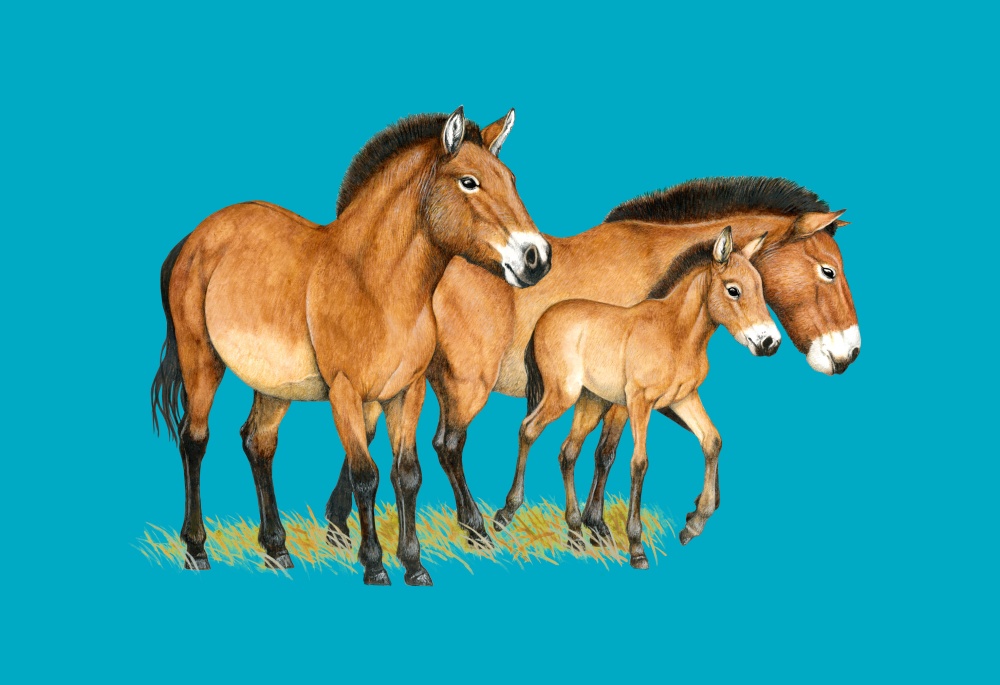
The visual for the Return of the Wild Horses 2024 is based on a concept that was proven whilst transporting Przewalski’s horses to Mongolia. The visual’s author for 2024 is Czech illustrator and naturalist Jan Dungel. He has captured a group of Przewalski’s horses to symbolise the project’s target - a fully viable population of Przewalski’s horses in Altyn Dala. The background colour is based on the colours of the Kazakhstan flag. Source Prague Zoo
The Memorandum on Cooperation between all the institutions involved in the project was signed last week, on 28 February, in Astana, Kazakhstan.
Institutions and entities working on the project
Prague Zoo keeps the World Stud Book for the Przewalski’s Horse as well as its EEP (EAZA Ex-situ programme = European Breeding Programme). After World War Two it played a crucial role in rescuing the Przewalski’s horse. Later on, it came up with the idea of reintroducing the horse and subsequently became highly involved in this project. It organised nine transports of Przewalski’s horses from Europe to western Mongolia which were highly significant. It is now preparing a reintroduction project for eastern Mongolia in addition to preparing the transport of Przewalski’s horses to Kazakhstan.
The Forestry and Wildlife Committee (FWC) is a state department falling under the auspices of the Ministry of Ecology and Natural Resources of the Republic of Kazakhstan. Its task is to manage and protect nature and specially protected areas. It reached out to Prague Zoo in autumn 2022 thus initiating the launch of the project to reintroduce Przewalski’s horses to Kazakhstan.
The Association for the Conservation of Biodiversity of Kazakhstan (ACBK) is a statewide public association aimed at biodiversity conservation and raising public awareness. Taking a broader perspective, the Return of the Wild Horses project is part of its long-term endeavours to reconstruct the country’s native steppe communities. The ACBK is behind the construction of the necessary infrastructure in the Altyn Dala State Nature Reserve. This was used in the past to reintroduce the kulan in close cooperation with the Frankfurt Zoological Society.
Tierpark Berlin is a zoo that has been involved in the breeding, management and reintroduction of various animal species in the past and has also collaborated in the conservation of the Przewalski’s horse too. In the framework of the Return of the Wild Horses project, it will provide horses from its breeding programme, bring suitable candidates from other European institutions into its breeding facility and will be directly involved in transporting them to Kazakhstan.
The Frankfurt Zoological Society (FZS) is an international organisation that coordinates conservation projects for endangered species and ecosystems in 18 countries. In Kazakhstan, it is involved in the conservation of the saiga antelope or the Turkmenian kulan. In 2006, it co-founded the Altyn Dala Conservation Initiative (ADCI).
Nuremberg Zoo (Tiergarten Nürnberg) is a public, non-profit zoo focusing on the ex-situ conservation of endangered animal species and their in-situ conservation by working with its partners in their countries of origin. In the past it has taken part in reintroducing Przewalski’s horses to Central Asia.
Hortobágy National Park has already taken part in reintroducing the Przewalski’s horse, at one time it also worked with Prague Zoo. The national park is currently home to the largest population of Przewalski’s horses outside their original range. Horses from this park will also be earmarked as candidates for the transports to Kazakhstan.
The Czech Air Force, specifically the 24th Air Transport Base based at the Prague-Kbely Airport, will provide the transport to Kazakhstan. It has cooperated with Prague Zoo in the past, such as transporting a gorilla from Spain or the nine transports of Przewalski’s horses to western Mongolia between 2011 and 2019.
ZOOPRAHA.CZ
Contacts
- The Prague zoological garden
U Trojskeho zamku 120/3
171 00 Praha 7
Phone.: (+420) 296 112 230 (public relations department)
e-mail: zoopraha@zoopraha.cz
Others
